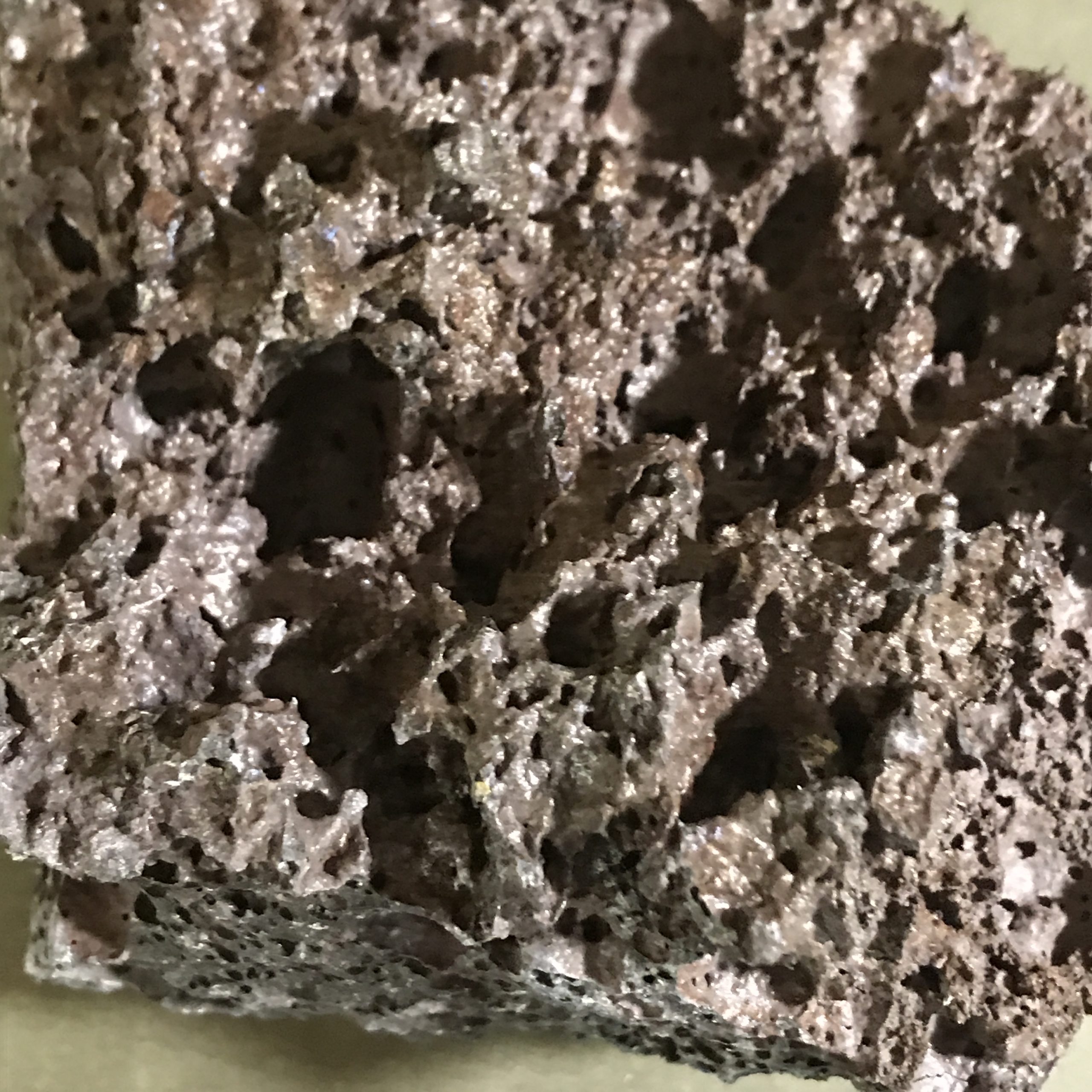Not All Rocks Are Old
We usually think rocks are millions of year old. Not all are. These are less than three years old. Ours is a dynamic earth: creating, destroying, changing.
Just got in some basalt from R.C. at Geological Specimen Supply. He collected these examples himself in Hawaii late last year. It was, pun intended, rocky going, walking on rock as sharp as glass.
For background, “Basalt is a fine-grained, dark brown to black rock that lava solidifies into. It is made of minerals, such as, calcium-rich plagioclase, pyroxene, and lesser amounts of olivine. Basalt is the main type of rock in oceanic environments, such as mid-ocean ridges and hot spots.” University of Oregon website (external link)
—
I got two specimens from R.C., one shows more olivine than the others. Olivine is commonly known as peridot.
—
Here’s how R.C. describes these examples. R.C., by the way, is a practicing geologist who spends most of his time wandering California and Nevada deserts looking for teaching examples of rocks and minerals.
Tholeiite basalt aa from the flow that destroyed Kapoho, Hawaii in 2018
Tholeiite basalt, rising from partial melts of peridotite in the mantle, is the most common igneous rock on earth and makes up the oceanic crust. It is the type of basalt found on the moon. Peridotite is composed primarily of olivine and pyroxine. Olivine crystallizes at a high temperature and is one of the first minerals to form crystals in the rising magma. It is common in Hawaiian basalts, weathering out of a Mauna Loa cinder cone near South Point, where it is concentrated in a cove to form a famous green sand beach.
Aa forms when lava cools quickly and moves fast, with the surface breaking up into a clinkery mass of loose jagged pieces. Aa flows tend to be thicker than pahoehoe and are almost impossible to walk on. This aa was formed on the flow that consumed the community of Kapoho in 2018 and completely filled in Kapoho Bay, forming a lava delta.
This aa is extremely scratchy and will impress any student that walking on an aa flow would be a challenge. Textbook example.

—

—
Closeup of texture.
-

—
For comparison, this is vesicular basalt from San Carlos in Arizona. It displays olivine more prominently. Stevie Joey mines this kind of basalt at his claim on the reservation. His website is Peridot Dreams and he is good people.

—
I also have some self-collected vesicular basalt from the Dixie National Forest in Utah, however, I am in too much pain right now to find it. Matter of fact, I was lucky to put on my socks this morning
—
R.C. mentioned “aa.” Cornell says this, “Lavas, particularly basaltic ones, come in two primary types: pahoehoe (pronounced ‘paw-hoey-hoey”) and aa (pronounced “ah-ah”). Aa forms when lava flows rapidly. Under these circumstances, there is rapid heat loss and a resulting increase in viscosity. When the solid surface crust is torn by differential flow, the underlying lava is unable to move sufficiently rapidly to heal the tear. Bits of the crust are then tumbled in and coated by still liquid lava, forming the chunks. Sometimes the crust breaks in large plates, forming a platy aa. ”
—
A little look at olivine sand from a green sand beach in Hawaii. Old stock. Hawaii’s coastline doesn’t favor beach formation. For decades, the white sand beaches of Waikiki were maintained by bringing in sand dredged from Long Beach Harbor in California.
—
—

—
“Around Kapoho.” Credit: Graeme Churchard: https://www.flickr.com/people/30659367@N00 Wikipedia Commons.
—

—
Credit: https://commons.wikimedia.org/wiki/User:R%C3%A9mih
—

—
“Views from HVO’s helicopter overflight at 1PM HST, show the remains of the Kapoho Beach Lots subdivision and the fissure 8 flow front. The northern flow margin in this area was unchanged from HVO’s morning flight and appeared to have stopped advancing at the time of the flight.” Credit: USGS.
—
I wish you and yours good health.

—
https://www.instagram.com/tgfarley/
Follow me on Instagram: tgfarley




